Introduction

You have to admit that it's quite strange when the most high-end graphic card from AMD comes in at around 40% cheaper than the top VGA card from Nvidia, even after the recent price drop. As far as we can remember, this is the only time we have seen something like this happen.
When we had a look at the Radeon HD 2900 XT the other week from MSI we were impressed with it as the new drivers gave it a big boost and it was capable of outperforming the GeForce 8800 GTX at times - could the HD 2900 XT continue to perform and even pass the Ultra?
With both AMD's and Nvidia's top cards in hand thanks to ASUS, we will have a look at what exactly ASUS has done with the cards and then continue to pit them against each other.
Is it worth really spending all that money on an Ultra? Let's continue on and find out the answer, shall we?
ASUS HD 2900 XT - Package
The Package
While we have the typical large box design from ASUS we can see they have gone down the Gigabyte path with front of the box being concentrated on the game that is included in the package. In this case, it's S.T.A.L.K.E.R, which is quite a major game that was only released a little while ago in March.
Apart from S.T.A.L.K.E.R we see all the usual details on the front of the box - model, amount of RAM, main features like HDCP along with a large sticker on the front to mention the inclusion of Black Box, which is actually now Orange Box, which comes with a few extra games, which are yet to be released.
Turning the box over we have a pretty standard affair with some extended details on the card along with an explanation on some of the features that ASUS cards offer.
Diving into the package it's actually pretty full on, cable wise we have some molex to PCI Express power connectors, two DVI to VGA connectors, DVI to HDMI connector, ATI Crossfire cable, VIVO cable and HDTV Component out cable.
Paperwork wise we have a quick install guide and the Black Box voucher. We also have a CD wallet and on the software side of things we have a CD with the manual on it, another with the driver and copy of S.T.A.L.K.E.R.
Overall it's a pretty nice package and the inclusion of S.T.A.L.K.E.R. is a nice touch since most companies feel that since the Black Box is included they don't have to include another game but ASUS did anyway to spice up the package even more. The only thing we would have liked to have seen which the MSI did include was the 6-pin to 8-pin connector, otherwise it's a fantastic package overall.
ASUS HD 2900 XT - Card
The Card
Looking at the front of the card, the only distinct difference between this HD 2900 XT over other brands is the sticker. In this case you can see they have opted for the S.T.A.L.K.E.R. design, which doesn't look too bad at all.
If you look closely you can see the silver flames behind the sticker that are on all HD 2900 XT cards.
The top of the card has two power connectors - the 6-pin connector along with the 8-pin connector. Unfortunately unless your power supply has an 8-pin connector, you will lose the ability to have Overdrive enabled, which is the automatic overclocking program, built into Catalyst Control Center.
Across the top we have two connectors for Crossfire dual graphics.
I/O wise there are two Dual Link DVI connectors along with a VIVO port which lets us get not only video out but also video in if you feel like recording something to your PC from an external device.
When it comes to clock speeds the ASUS card follows the standard clocks which come in at 740MHz on the core and 825MHz (or 1650MHz DDR) on the memory. It of course comes with the standard 512MB of GDDR-3 memory thought we should see the 1GB model here in the next week or two, which is something to keep in mind.
ASUS 8800 Ultra - Package
The Package
Like the HD 2900 XT package, the 8800 Ultra is very similar in most ways. It carries the S.T.A.L.K.E.R. theme as it's included within the bundle and also mentions all the main features on the front of the box along with the model.
The biggest difference on the front of the box is the exclusion of the Black Box sticker, as you would expect.
Turning the box over we also have much of the same with a larger explanation on the main features on the card along with some of the exclusive features of the ASUS version thanks to some of the bonus software bundled.
Unfortunately we weren't the first to get this card so it seems that some of the bundle had become lighter thanks to some other writers finding themselves wanting a copy of S.T.A.L.K.E.R. or some extra molex to PCI E connectors.
While we only have the CD wallet, manual CD, Speed Guide, DVI to VGA connector and component out cable also included is a copy of S.T.A.L.K.E.R, driver CD and two Molex to PCI Express connectors.
The package is little light for a card of this price, especially when you compare to something like the HD 2900 XT offering which also includes Black Box game package, DVI to HDMI connector and comes in significantly cheaper. The bottom line though is that most companies feel that the performance of the card is enough to warrant the high price and lacking bundle.
ASUS 8800 Ultra - Card
The Card
The ASUS offering is the same big card that we saw from XFX and we can also see that ASUS went to a lot of effort to make sure that people could determine that it was their product.
What, you cannot tell? There is a little sticker on the fan that says "ASUS Gaming", can you see it now? The biggest problem is that it doesn't even really stand out that much due to the black on black design. This is pretty much what seems to happen with most high-end cards these days though and this is one of the smallest changes to a reference card we have ever seen before.
Moving around the card one side has the dual PCI Express power connectors and the other end has the dual SLI connectors.
The I/O is all very standard as well - dual card slot with one for exhaust, two DVI connectors of which both are Dual Link along with TV Out port. It's all very standard though even the top AMD offering has VIVO, it would have been nice to see the Ultra include this too.
Clock speeds on this particular model come in at reference speeds which mean 612MHz on the core 1500MHz on the shader clock and 2160MHz DDR on the memory.
Benchmarks - Test System Setup and 3DMark05
Test System Setup
Processor(s): Intel Core 2 Duo E6600 @ 3GHz (333MHz x 9)
Motherboard(s): ASUS P5K3 Deluxe (Supplied by ASUS)
Memory: 2 X 1GB Corsair XMS3 DDR-3 1066MHz 7-7-7-21 (Supplied by Corsair)
Hard Disk(s): Hitachi 80GB 7200RPM SATA-2
Operating System: Microsoft Windows XP Professional SP2
Drivers: Nvidia ForceWare 158.22, ATI Catalyst 7.5 and DX9c
With our extended benchmarks still in place along with all our extra tests including power, sound and heat, we are really able to provide a comprehensive analysis of the products here today.
With the HD 2900 XT and 8800 Ultra we have included the 8800GTS and GTX for comparison and we also check out some overclocking on both the HD 2900 XT and 8800 Ultra to see how each compare.
Let's get this show on the road!
3DMark05
Version and / or Patch Used: Build 130
Developer Homepage: http://www.futuremark.com
Product Homepage: http://www.futuremark.com/products/3dmark05/
Buy It Here
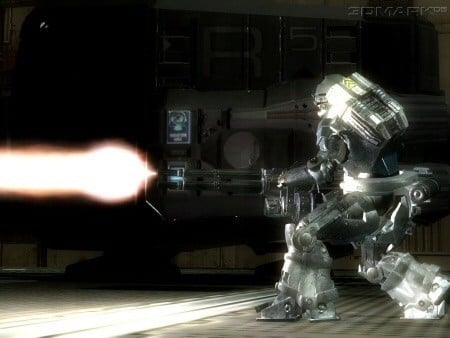
3DMark05 is now the second latest version in the popular 3DMark "Gamers Benchmark" series. It includes a complete set of DX9 benchmarks which tests Shader Model 2.0 and above.
For more information on the 3DMark05 benchmark, we recommend you read our preview here.

We can see in the older 3DMark that all the cards sit pretty close together.
Benchmarks - 3DMark06
3DMark06
Version and / or Patch Used: Build 110
Developer Homepage: http://www.futuremark.com
Product Homepage: http://www.futuremark.com/products/3dmark06/
Buy It Here

3DMark06 is the very latest version of the "Gamers Benchmark" from FutureMark. The newest version of 3DMark expands on the tests in 3DMark05 by adding graphical effects using Shader Model 3.0 and HDR (High Dynamic Range lighting) which will push even the best DX9 graphics cards to the extremes.
3DMark06 also focuses on not just the GPU but the CPU using the AGEIA PhysX software physics library to effectively test single and Dual Core processors.

Moving to the newer 3DMark06 we can see that at the lower resolution the HD 2900 XT and 8800 Ultra are pretty close together.
Moving up in resolutions we can see that the more expensive Ultra pulls ahead quite significantly.
Benchmarks - RyderMark
RyderMark
Version and / or Patch Used: Beta 2
Developer Homepage: http://www.candellasoftware.com

RyderMark is a new 3D benchmark application by Candella Software designed to take on the 3DMark series from Futuremark.
We are testing using the early Beta 2 version which was sent to us by the developers. For a closer look at the benchmark software, take a look at our preview.


The increased core, shader and memory speed on the Ultra seemed to come in extremely handy in the latest simulated benchmark to hit our test bed.
While the HD 2900 XT has no problems outperforming the other 8800 offerings, the Ultra is able to take quite the lead.
Benchmarks - Half Life 2 (Lost Coast HDR)
Half Life 2 (Lost Coast HDR)
Version and / or Patch Used: Latest from Steam
Timedemo or Level Used: Custom Timedemo
Developer Homepage: http://www.valvesoftware.com
Product Homepage: http://www.half-life2.com
Buy It Here
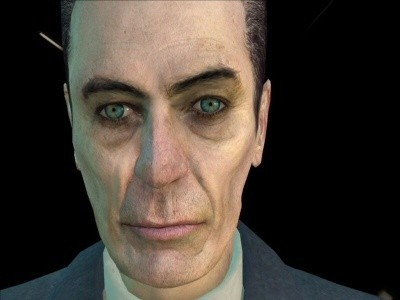
By taking the suspense, challenge and visceral charge of the original, and adding startling new realism, responsiveness and new HDR technology, Half-Life 2 Lost Coast opens the door to a world where the player's presence affects everything around him, from the physical environment to the behaviors even the emotions of both friends and enemies.
We benchmark Half Life 2 Lost Coast with our own custom timedemos as to avoid possible driver optimizations using the "record demo_name" command and loading the timedemo with the "timedemo demo_name" command - For a full list of the commands, click here.

At the lower resolutions here we can see we are bouncing off a bit of a wall hence the results being a bit over the place.
As we move up we can see that while the HD 2900 XT is only just behind the GTX, the Ultra has quite the lead. The important thing to note though is that both cards are still offering a very playable setup.
Benchmarks - Prey
Prey
Version and / or Patch Used: Unpatched
Timedemo or Level Used: HardwareOC Custom Benchmark
Developer Homepage: http://www.humanhead.com
Product Homepage: http://www.prey.com
Buy It Here

Prey is one of the newest games to be added to our benchmark line-up. It is based off the Doom 3 engine and offers stunning graphics passing what we've seen in Quake 4 and does put quite a lot of strain on our test systems.

The biggest improvement over the HD 2900 XT can only really be seen at 2560 x 1600, at 1920 x 1200 the Ultra still has a healthy lead but both are offering playable frame rates.
Benchmarks - F.E.A.R.
F.E.A.R.
Version and / or Patch Used: Unpatched
Timedemo or Level Used: Built-in Test
Developer Homepage: http://www.vugames.com
Product Homepage: http://www.whatisfear.com/us/
Buy It Here
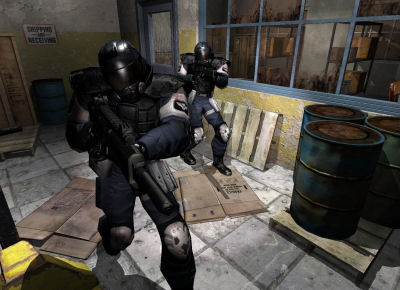
F.E.A.R. (First Encounter Assault Recon) is an intense combat experience with rich atmosphere and a deeply intense paranormal storyline presented entirely in first person. Be the hero in your own spine-tingling epic of action, tension, and terror...and discover the true meaning of F.E.A.R.


F.E.A.R. has always been a bit of a fan favorite for Nvidia and we can see that the Ultra has quite the lead on the HD 2900 XT.
Benchmarks - Company of Heroes
Company of Heroes
Version and / or Patch Used: 1.5
Timedemo or Level Used: Built-in Test
Developer Homepage: http://www.relic.com
Product Homepage: http://www.companyofheroesgame.com
Buy It Here

Company of Heroes, or COH as we're calling it, is one of the latest World War II games to be released and also one of the newest in our lineup of benchmarks. It is a super realistic real-time strategy (RTS) with plenty of cinematic detail and great effects. Because of its detail, it will help stress out even the most impressive computer systems with the best graphics cards - especially when you turn up all the detail. We use the built-in test to measure the frame rates.


This is really one of the first real wins for the Ultra; both cards aren't really playable at 2560 x 1600 as the minimum drops below 30FPS but at 1920 x 1200, while the HD 2900 XT is border lining things 30 FPS, the Ultra is well and truly above it.
Benchmarks - Supreme Commander
Supreme Commander
Version and / or Patch Used: 3220
Timedemo or Level Used: Built-in Test
Developer Homepage: http://www.gaspowered.com
Product Homepage: http://www.supremecommander.com
Buy It Here

In the 37th Century, you are the Supreme Commander of three races, with a single goal in mind-to end the 1000 year Infinite War and become the reigning power supreme. For a thousand years, three opposing forces have waged war for what they believe is true. There can be no room for compromise: their way is the only way. Dubbed The Infinite War, this devastating conflict has taken its toll on a once-peaceful galaxy and has only served to deepen the hatred between the factions.


It really doesn't matter what you are using here, you will find yourself having to turn down the detail in Supreme Commander.
At 2560 x 1600 the HD 2900 XT seems to have some problems but with a minimum of 6FPS vs. 10FPS, you're not going to be playing this game at these settings on any single card setup at this time.
Benchmarks - High Quality AA and AF
High Quality AA and AF
Our high quality tests let us separate the men from the boys and the ladies from the girls. If the cards weren't struggling before they will start to now.

We can see in our synthetic AA/AF test that the Ultra gives itself quite the lead when compared to the HD 2900 XT.

We continue to see a large gain on the Ultra when we have AA and AF switched on.

Nvidia's OpenGL optimization continues to give them the lead over any ATI cards.
Benchmarks - Overclocking
Overclocking
Moving to overclocking we got the Ultra from the default 612MHz core to 662MHz and the memory from 2080MHz DDR to 2280MHz DDR.
The HD 2900 XT went from 743MHz core to 850MHz core and the memory moved from 1658MHz DDR to 1812MHz DDR.

Thanks to the overclocking power on offer from the HD 2900 XT we find ourselves coming into arms reach of the 8800 Ultra. The Ultra doesn't overclock as much comparatively, so the gains are smaller.


Gains can be seen with both cards at the minimum and average levels. We can see that the overclocked HD 2900 XT is also coming closer to the 8800 Ultra once again.
Temperature and Sound Tests
Temperature Tests
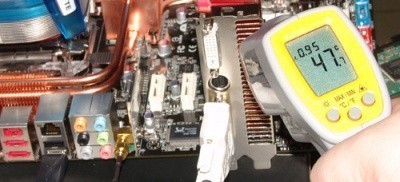
With the TES 1326 Infrared Thermometer literally in hand we found ourselves getting real-world temperatures from the products we test at load (3D clock speeds).
There are two places we pull temperature from - the back of the card directly behind the core and if the card is dual slot and has an exhaust point we also pull a temperate from there, as seen in the picture.

We again see the same effect of the HD 2900 XT pumping out plenty of hot air.
Sound Tests
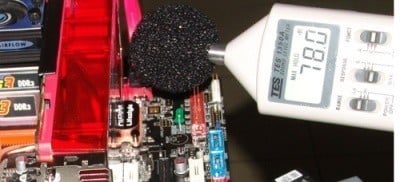
Pulling out the TES 1350A Sound Level Meter we find ourselves quickly yelling into the top of it to see how loud we can be.
After five minutes of that we get a bit more serious and place the device two CM away from the fan on the card to find the maximum noise level of the card when idle (2D mode) and in load (3D mode).

The Ultra is much quieter than the competition with the HD 2900 XT being much louder at both idle and full load.
Power Consumption Tests
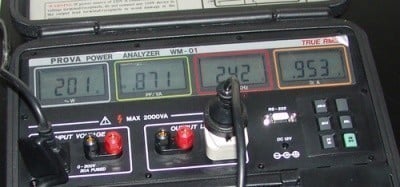
Using our new PROVA Power Analyzer WM-01 or "Power Thingy" as it has become quickly known as to our readers, we are now able to find out what kind of power is being used by our test system and the associated graphics cards installed. Keep in mind; it tests the complete system (minus LCD monitor, which is plugged directly into AC wall socket).
There are a few important notes to remember though; while our maximum power is taken in 3DMark06 at the same exact point, we have seen in particular tests the power being drawn as much as 10% more. We test at the exact same stage every time; therefore tests should be very consistent and accurate.
The other thing to remember is that our test system is bare minimum - only a 7,200RPM SATA-II single hard drive is used without CD ROM or many cooling fans.
So while the system might draw 400 watts in our test system, placing it into your own PC with a number of other items, the draw is going to be higher.

The Ultra is the most expensive and fastest card on the retail market and it still draws less power than the HD 2900 XT.
Final Thoughts
AMD's ATI Radeon HD 2900 XT graphics card really does continue to show how it can be a dominant card in the market and that the next offering from AMD/ATI should be a strong competitor, we think.
Sure, Nvidia's GeForce 8800 Ultra continues to win but at pricing starting at around or sometimes over 40% of the HD 2900 XT, you would expect it too as well. You throw in the fact that the Intel P35 is the new "in" chipset (which currently only supports Crossfire for its dual graphics system) you really have to look at the HD 2900 XT as the graphics card of choice.
ASUS have got a fabulous HD 2900 XT package as well - the inclusion of S.T.A.L.K.E.R. alongside the normal Black Box is excellent and at least you feel you're getting something extra for your money.
It is also good to see that S.T.A.L.K.E.R. is bundled with the 8800 Ultra but so it should - there should be two or three copies at this price! The card is expensive and it's not ASUS fault. Nvidia is charging their partners literally a robotic arm and leg from their manufacturing plants for the chips, even after the recent price drop (from $830 USD to about $700 USD for standard non-factory OC versions) which probably wasn't really even enough.
With the new ATI Catalyst 6.7 drivers from AMD due out very soon, no doubt the HD 2900 XT is at the top of the priority list when it comes to performance improvements and even if it doesn't end up beating the 8800 Ultra, at only half the price, it is very easy to see the value in the Radeon HD 2900 XT. It got some bad press at launch but every time we take a closer look at it, it just seems to get better and better.
If anything the release of the Ultra and the high price take makes the HD 2900 XT look even better as it's not much slower (especially when overclocked, not far behind at all) but so much cheaper.
ASUS HD 2900 XT Summary
- Pros
Great value for money!
Nice overclocking performance
Excellent gaming bundle
Monthly driver updates
VIVO included
- Cons
AA Performance
No 6-pin to 8-pin power connector included

Rating - 9 out of 10 and TweakTown's "MUST HAVE" Editor's Choice Award!
ASUS 8800 Ultra Summary
- Pros
Fastest card on the market
- Cons
Expensive!
Bundle lacking for the price
No VIVO
Rating - 7 out of 10


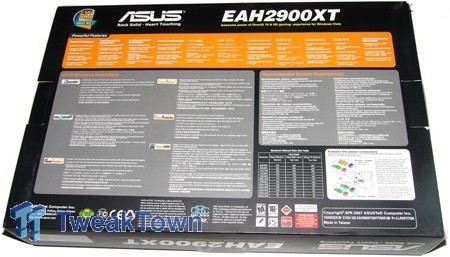









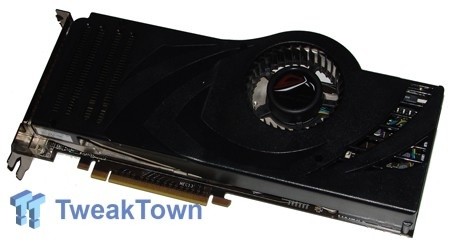

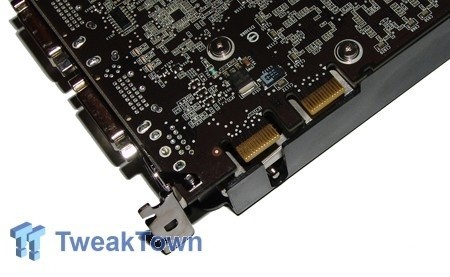
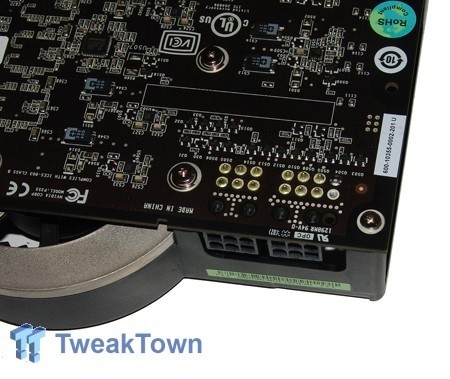

 United
States: Find other tech and computer products like this
over at
United
States: Find other tech and computer products like this
over at  United
Kingdom: Find other tech and computer products like this
over at
United
Kingdom: Find other tech and computer products like this
over at  Australia:
Find other tech and computer products like this over at
Australia:
Find other tech and computer products like this over at  Canada:
Find other tech and computer products like this over at
Canada:
Find other tech and computer products like this over at  Deutschland:
Finde andere Technik- und Computerprodukte wie dieses auf
Deutschland:
Finde andere Technik- und Computerprodukte wie dieses auf